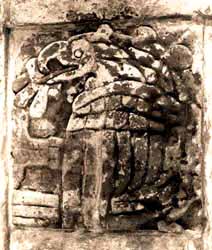|
[Pattern Language, Symbols, Memes]
 “Aristotle’s Physica, Ptolemy’s Almagest,
Newton’s Principia and Opticks, Franklin’s Electricity, Lavoisier’s Chemistry and Lyell’s Geology—these and many other works served for a time implicitly to define the legitimate
problems and methods of a research field for succeeding generations… They were able to do so because they shared two essential characteristics. Their achievement was sufficiently unprecedented to attract an enduring
group of adherents away from competing modes of scientific activity. Simultaneously, it was sufficiently open-ended to leave all sorts of
problems for the redefined group of practitioners to resolve. Achievements that share these two characteristics I shall henceforth refer to as ‘paradigms,’… By
choosing it, I mean to suggest that some accepted examples of actual scientific practice—examples which include law, theory, application, and instrumentation
together—provide models from which spring particular coherent traditions of scientific research. These are the traditions which the historian describes under
such rubrics as ‘Ptolemaic astronomy’…, ‘Aristotelian dynamics’…, ‘corpuscular optics’…, and so on.” (Kuhn, The Structure of Scientific
Revolutions, p. 10.) “Aristotle’s Physica, Ptolemy’s Almagest,
Newton’s Principia and Opticks, Franklin’s Electricity, Lavoisier’s Chemistry and Lyell’s Geology—these and many other works served for a time implicitly to define the legitimate
problems and methods of a research field for succeeding generations… They were able to do so because they shared two essential characteristics. Their achievement was sufficiently unprecedented to attract an enduring
group of adherents away from competing modes of scientific activity. Simultaneously, it was sufficiently open-ended to leave all sorts of
problems for the redefined group of practitioners to resolve. Achievements that share these two characteristics I shall henceforth refer to as ‘paradigms,’… By
choosing it, I mean to suggest that some accepted examples of actual scientific practice—examples which include law, theory, application, and instrumentation
together—provide models from which spring particular coherent traditions of scientific research. These are the traditions which the historian describes under
such rubrics as ‘Ptolemaic astronomy’…, ‘Aristotelian dynamics’…, ‘corpuscular optics’…, and so on.” (Kuhn, The Structure of Scientific
Revolutions, p. 10.)- “In its established usage, a paradigm is an accepted model or pattern, and that aspect of its meaning has enabled me, lacking a better word, to appropriate
‘paradigm’ here… In a science…a paradigm is rarely an object for replication. Instead, like an accepted judicial decision in the common law, it is an object for
further articulation and specification under new or more stringent conditions.” (Ibid., p. 23.)
|

